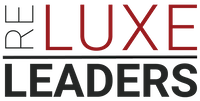“`html
The Structure of a Great Meeting: 3 Tactical Tips to Lead with Purpose
This article—authored by our Founder and CEO,
Chris Pollinger
and originally published by Inman News—delivers a disciplined framework for structuring meetings that respect time and drive decisions.
Is a Meeting Necessary? The Most Crucial First Question
At the executive level, inefficient meetings are a relentless drain on your time and focus. Leaders in the top 5% of real estate brokerages know the quiet tension of balancing urgent operational demands with strategic priorities—making every meeting count is non-negotiable.
Before initiating or committing to a meeting, determine if it is truly necessary. Many meetings devolve into information that could have been communicated via a succinct email or phone call, creating avoidable frustration and lost momentum.
- If you only require answers to specific questions or updates on action items, opt for a direct phone call with the stakeholders involved instead of a meeting.
- Handle difficult or sensitive topics individually rather than in a group setting to preserve trust and candor.
- Cancel recurring meetings without substantive updates to honor everyone’s bandwidth.
Tip 1 – Before the Meeting: Preparation & Clarity
Once necessity is established, rigorous preparation is the foundation of a productive meeting. Define a precise purpose, intended outcomes, and structure to align all participants before you convene.
- Set Clear Objectives: Identify whether the meeting’s goal is to inform, decide, brainstorm, or delegate. Clarify expectations about decisions to be made during or following the meeting.
- Curate the Attendee List: Limit participation to essential contributors to maintain focus and efficiency.
- Allocate Time Judiciously: Estimate the realistic time needed based on agenda complexity, and protect that time boundary.
- Distribute the Agenda and Materials in Advance: Circulate a concise agenda with assigned discussion leads and any preparatory documents at least 24–48 hours before. This enables thoughtful contributions and reduces meeting-length.
- Ensure Environment Readiness: Confirm the meeting space or virtual platform is comfortable, functional, and distraction-free to support engagement.
Tip 2 – During the Meeting: Execution & Engagement
Precision in execution during the meeting is critical to safeguarding time and driving outcomes. Elite brokerage leaders treat meetings as a non-negotiable operational priority with disciplined facilitation.
- Start and End On Time: Honor everyone’s schedule—start promptly and aim to end early to build trust and increase engagement.
- Clarify the Purpose Upfront: Open by restating “Why we are here” to align focus immediately.
- Designate a Skilled Note-Taker: Use a team member capable of capturing succinct, actionable notes to document decisions and accountability.
- Manage the Agenda Effectively: Guide discussion firmly but respectfully—redirect off-topic dialogue, limit monologues, and re-engage disengaged attendees by addressing their concerns directly.
- Assign Accountability: Capture clear action items, owners, and deadlines live during the meeting to eliminate ambiguity post-meeting.
- Embrace Agile Meeting Discipline: When possible, conclude before the scheduled end time to demonstrate efficiency and respect.
Tip 3 – After the Meeting: Follow-Up & Accountability
The meeting’s impact is solidified through disciplined follow-up. Without it, decisions dissipate and accountability blurs.
Leaders committed to operational maturity distribute concise minutes focusing on:
- Summary of key decisions made
- Action items with clearly assigned owners and deadlines
- Relevant updates for absentees to maintain alignment
Additionally, assess the meeting’s effectiveness versus intended goals—what was accomplished, what fell short, and opportunities for improvement. This reflective practice sharpens leadership and hones team dynamics moving forward.
Closing Thoughts & Additional Resources
Great meetings are strategic instruments, not time sinks. Mastering the structure means adopting a mindset of purposeful intent, rigorous preparation, skilled facilitation, and relentless follow-through. For the elite brokerage leader, this discipline protects time, builds trust, and accelerates business outcomes.
For further refinement of your leadership and operations, we recommend exploring these curated resources:
- Real Estate Insights – Expert commentary and strategies from luxury real estate consultants to outposition competitors.
- Downloads and Tools – Practical assets aimed at accelerating the growth of top-tier real estate businesses.
- Luxe Real Estate Reports and Forecasts – Exclusive market intelligence for sustained competitive advantage.
- Luxury AI for Real Estate – Tailored AI solutions to simplify operations and enhance decision-making.
If you are evaluating consulting or coaching options to elevate your meetings and leadership approach, our interactive wizard is designed to identify the best tailored solution for your unique business scenario.
Stay connected with ongoing insights from our Founding Partner, Chris Pollinger, through his profile and social channels:
LinkedIn,
Twitter,
Facebook,
Instagram.
“`
—
### SEO & Semantic Notes
**Focus Keyword:** structure of a great meeting
**Related Keywords:** meeting effectiveness, meeting preparation, meeting follow-up, leadership meetings, brokerage leadership meetings
– The article addresses the user’s implicit search intent for actionable guidance on structuring effective meetings—particularly relevant for brokerage leaders and high-level professionals.
– Use of semantic HTML5 elements (`





